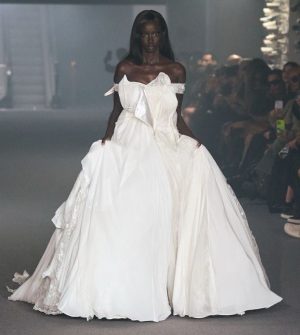Fashion has always been more than fabric — it is rhythm, repetition, and reinvention. Each season, designers revisit familiar shapes and patterns, remixing them into something new. In many ways, fashion behaves like a game: unpredictable yet guided by rules, structured yet open to surprise. Just as online slots use recurring motifs to create variation, the fashion industry thrives on the tension between familiarity and novelty.

Fashion and Play: How Style Mirrors the World of Patterns and Chance
Patterns That Tell Stories
One of the clearest parallels between fashion and gaming lies in the use of patterns. From houndstooth to pinstripes, polka dots to geometric prints, patterns repeat with slight variations, catching the eye in ways both expected and unexpected. These motifs carry meaning: stripes suggest authority, florals evoke playfulness, and checks reflect heritage.
Designers often reintroduce classic prints with subtle twists, ensuring they feel fresh while still resonating with audiences who know their history. In this sense, fashion borrows from the same principle of variation on a theme that makes chance-based games visually engaging.
The Element of Surprise
Fashion shows are renowned for their ability to shock, whether through an unexpected silhouette, a bold color, or an unconventional fabric pairing. This element of surprise is central to the industry’s energy. Just as a game relies on unpredictability to maintain interest, style thrives on moments that defy expectation.
Consider the sudden resurgence of kitten heels under straight-leg jeans or the embrace of suede in neutral tones this autumn. These shifts echo the way familiar frameworks can produce fresh outcomes, keeping audiences engaged season after season.
Minimalism and Playfulness
At the other end of the spectrum lies minimalism, a movement that strips fashion down to its essence. Clean tailoring, muted palettes, and functional accessories offer predictability and calm — a kind of visual order that balances the chaos of constant change.
This interplay between structure and playfulness reflects broader cultural patterns. In entertainment, too, people often oscillate between seeking simplicity and enjoying moments of chance. The enduring popularity of online slots illustrates this balance: simple in form yet endlessly variable in outcome, much like a well-tailored blazer reimagined year after year.
Accessories as Symbols
Accessories provide another layer of comparison. A leather belt, a suede handbag, or a pair of oversized sunglasses may seem like finishing touches, but they often hold symbolic weight. These pieces communicate status, taste, or mood — subtle signals embedded in everyday life.
In a similar way, the visual motifs used in games act as cues. Whether it’s ancient hieroglyphs, lucky numbers, or jewel-like icons, these symbols contribute meaning beyond function. Both fashion and gaming rely on imagery to create stories that resonate.
Cycles of Reinvention
Fashion’s cyclical nature is often described as a carousel: trends come back, reshaped for new generations. Vintage denim, 1970s boho, 1990s minimalism — all return with updated details. This cycle ensures continuity while embracing change.
The same is true of chance-based play. While the core structures remain consistent, variations in theme, design, and atmosphere keep experiences feeling new. It is this combination of predictability and reinvention that keeps both fashion and gaming culturally relevant.
The Broader Connection
What links fashion and play most strongly is their shared role as forms of expression. Dressing in a particular style, like engaging with a familiar pastime, provides a sense of identity and belonging. Both are shaped by cultural heritage, personal preference, and the thrill of exploring something slightly new.
Closing Thought
At first glance, fashion and online slots may seem worlds apart. Yet both rely on rhythm, symbols, and cycles of reinvention to capture attention. Whether through the repeated geometry of a textile print or the variation within a familiar digital framework, the principle is the same: patterns and chance work together to create experiences that are both familiar and fresh.
Online gaming may have gained popularity now but casinos have always been a glamorous spot. They have had a profound impact on the fashion industry and have brought about a stunning balance between the two industries. Known for luxury, high fashion and high-stakes, casinos define class and style. They have managed to attract a varied group of individuals who are looking for entertainment and extravagance. Today, this same sense of luxury and excitement continues online through slotocash real cash slots, where players can enjoy the thrill of classic casino gaming with modern convenience.
Fashion tells its stories through fabric and form; play does so through imagery and variation. In each case, the appeal lies in balance — structure meeting surprise, tradition meeting reinvention.
Shikha Negi is a Content Writer at ztudium with expertise in writing and proofreading content. Having created more than 500 articles encompassing a diverse range of educational topics, from breaking news to in-depth analysis and long-form content, Shikha has a deep understanding of emerging trends in business, technology (including AI, blockchain, and the metaverse), and societal shifts, As the author at Sarvgyan News, Shikha has demonstrated expertise in crafting engaging and informative content tailored for various audiences, including students, educators, and professionals.











